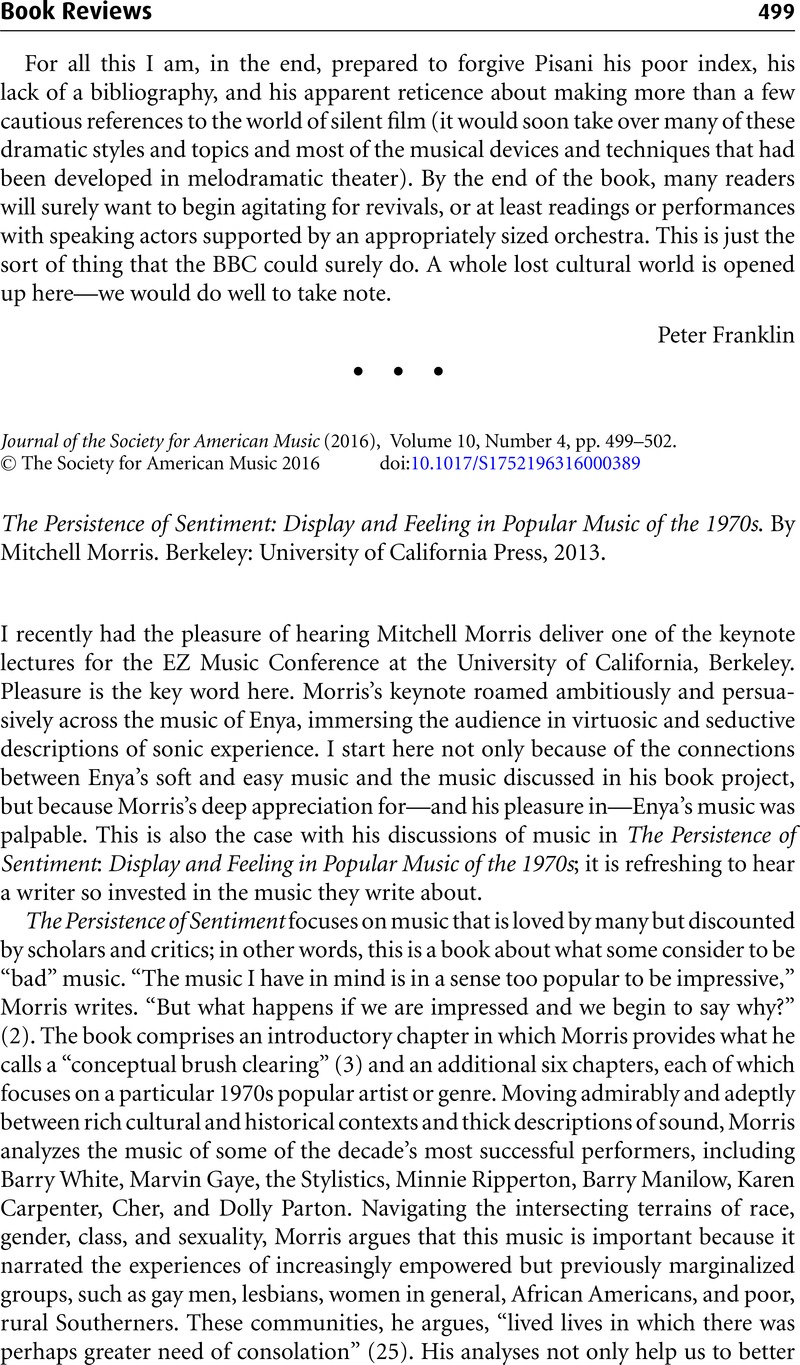No CrossRef data available.
Published online by Cambridge University Press: 27 October 2016

1 Stras, Laurie, ed., She's So Fine: Reflections on Whiteness, Femininity, Adolescence and Class in 1960s Music (Surrey, England: Ashgate, 2010)Google Scholar; Wald, Elijah, How the Beatles Destroyed Rock ’n’ Roll (Oxford: Oxford University Press, 2009)Google Scholar; and Wilson, Carl, Let's Talk About Love: A Journey to the End of Taste (New York: Continuum Press, 2007)CrossRefGoogle Scholar.
2 Sentimentality is an expansive topic within literary studies and philosophy. The following texts offer particularly useful theorizations and histories of the terms sentiment and sentimentality: Todd, Janet, Sensibility: An Introduction (London: Methuen, 1986)Google Scholar; Howard, June, “What Is Sentimentality?” American Literary History 11, no. 1 (1999): 63–81 CrossRefGoogle Scholar; and Samuels, Shirley, ed., The Culture of Sentiment: Race, Gender, and Sentimentality in Nineteenth-Century America (New York: Oxford University Press, 1992)Google Scholar.
3 Kelefa Sanneh, “The Rap Against Rockism,” New York Times, October 31, 2004, http://www.nytimes.com/2004/10/31/arts/music/the-rap-against-rockism.html?_r=0. In addition to Stras, Wald, and Wilson, other relevant and recent popular music scholarship that similarly critiques rockist ideology includes Mahon, Maureen, Right to Rock: The Black Rock Coalition and the Cultural Politics of Race (Durham, NC: Duke University Press, 2004)CrossRefGoogle Scholar; and Randall, Annie J., Dusty! Queen of the Postmods (New York: Oxford University Press, 2009)Google Scholar.